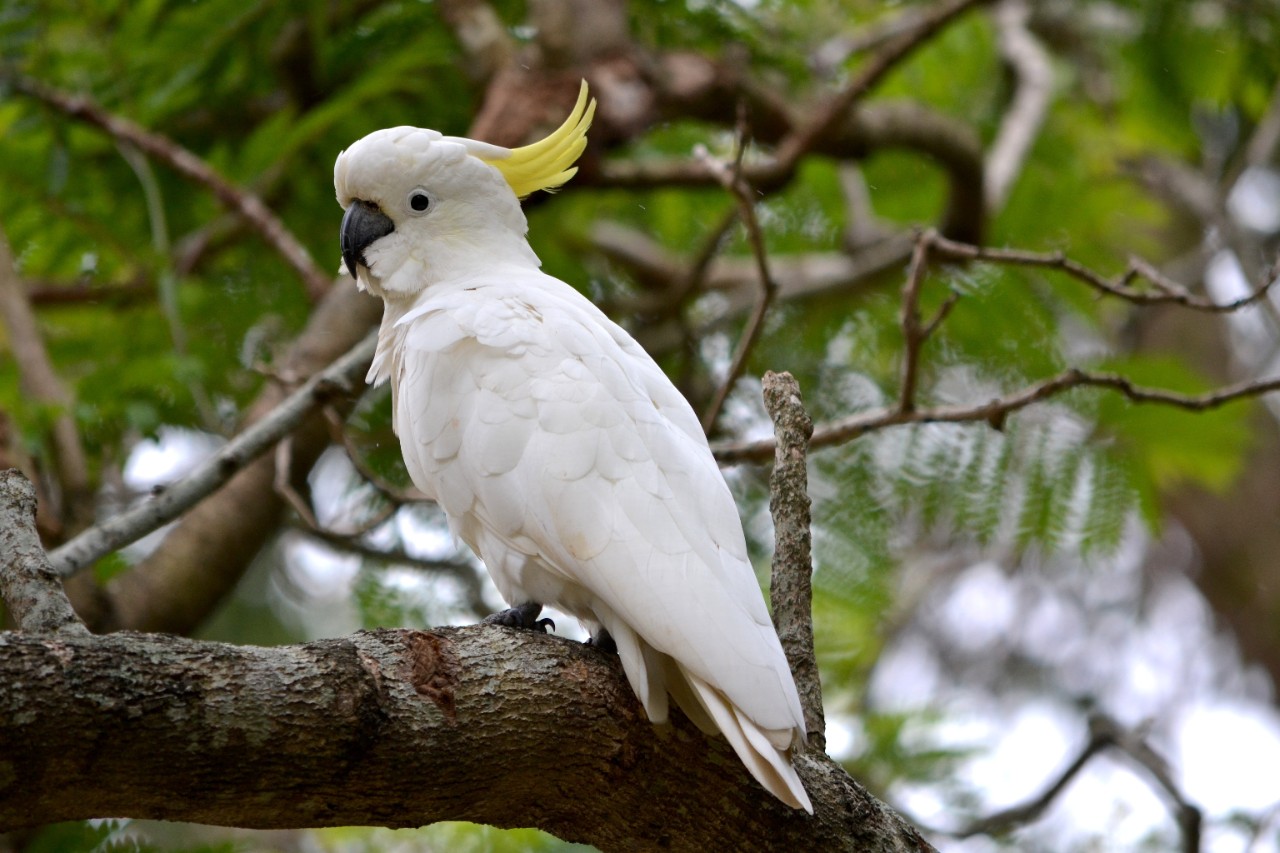
Scientific American: Cockatoos outsmart people in garbage wars
UC ecologist explains what makes cockatoos so devilishly clever
Scientific American turned to a University of Cincinnati behavioral ecologist to explain what makes cockatoos so fiendishly intelligent.
Sulphur-crested cockatoos, a type of parrot, are found in cities in Australia where they have a nasty habit of raiding garbage cans. About 10 years ago, one clever bird figured out how to pry off the lid of a garbage bin to get to food remains. Soon, cockatoos across Sydney were parroting the behavior, annoying neighbors across the city with their littering.

Elizabeth Hobson. Photo/Andrew Higley/UC Marketing + Brand
UC assistant professor Elizabeth Hobson studies parrots and other social birds in her lab in UC's College of Arts and Sciences. She told Scientific American that parrots have a formidable brain.
“[Parrots] are pretty cognitively flexible in terms of their problem-solving,” Hobson told Scientific American. “They can learn from others, and they can innovate.”
In her lab, Hobson and her students study a variety of animal behaviors, including pecking orders and the social structures of birds such as fairy penguins.
Ironically, researchers at the Max Planck Institute of Animal Behavior found that much like cockatoos, people living in Sydney seemed to adopt behavioral cues from their closest neighbors about how best to deter the birds' garbage raids rather than turning to experts elsewhere for solutions.
Some people put rubber snakes on their cans to scare off the birds. Others placed heavy weights on the lids. As with cockatoo societies, people who lived near each other seemed to adopt similar strategies in what Scientific American called “an innovation arms race” between people and cockatoos.
Read the Scientific American story.
Check out Hobson Lab for more exciting UC animal behavior research.
More UC biology in the news

UC professor Joshua Benoit conducts research in Antarctica. Photo/Provided
- National Geographic: Do spiders dream?
- Allegheny Front: UC survey finds urban woodlands dense with invasive species
Related Stories
UC's art collection on display at the Contemporary Arts Center
January 5, 2026
University of Cincinnati leaders joined WVXU's Cincinnati Edition to talk about the university’s 200-year-old art collection, a new exhibition at the Contemporary Arts Center and the release of a companion book exploring the collection’s role in education and public engagement.
UC faculty and staff among Rising Star leadership honorees
January 5, 2026
Two UC faculty and staff members are among this year's Rising Star leadership program sponsored by YWCA Greater Cincinnati. Kelli Beecher, assistant professor in the UC College of Nursing, and Brittany Bibb, assistant director of programs and operations in the UC Division of Student Affairs, are among the emerging leaders of 2026. They were featured in the publication Movers & Makers.
What's behind the mysterious rise of migraines?
January 5, 2026
Weather patterns such as extreme heat and storm conditions have been linked to migraine attacks, and research shows those environmental conditions are becoming more common. As National Geographic recently reported, one of the leading theories behind this mysterious rise is that climate change may be playing a role.
